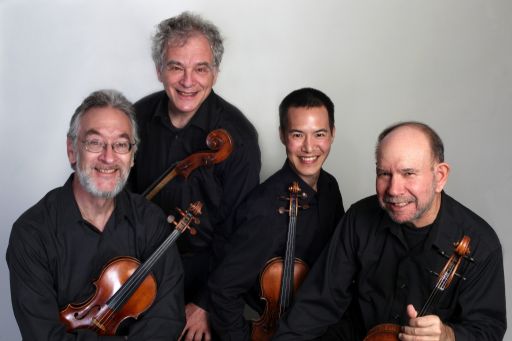|
Symphony
FROM THE NEW WORLD TO THE OLD WORLD
by Peter Lert
Saturday, June 14, 2025
Chamber
MC2 DUO RECITAL CLOSES 222'S SEASON
by Terry McNeill
Saturday, June 14, 2025
Choral and Vocal
CANTIAMO SONOMA'S LUSCIOUS A CAPELLA SINGING IN SEASON ENDING CONCERT
by Pamela Hicks Gailey
Sunday, June 8, 2025
Symphony
SRS SEASON ENDS WITH RESOUNDING TA-TA-TA-BANG
by Terry McNeill
Sunday, June 1, 2025
Symphony
YOUTHFUL VIRTUOSITY ON DISPLAY AT USO'S MAY CONCERTS
by Peter Lert
Saturday, May 17, 2025
Symphony
MYSTICAL PLANETS AND LIVELY GERSHWIN ORTIZ AT FINAL SRS CONCERT
by Peter Lert
Sunday, May 4, 2025
Symphony
VSO'S CONCERT MUSIC OF TIME, MUSIC OF PLACE
by Peter Lert
Sunday, April 27, 2025
VOCAL ELEGANCE AND FIRE AT THE 222'S RECITAL APRIL 26
by Pamela Hicks Gailey
Saturday, April 26, 2025
CANTIAMO SONOMA SINGS AN INSPIRED GOOD FRIDAY MOZART REQUIEM CONCERT
by Pamela Hicks Gailey
Friday, April 18, 2025
DRAMATIC SHOSTAKOVICH SYMPHONY CLOSES PHILHARMONIC'S 25TH SEASON
by Terry McNeill
Sunday, April 13, 2025
|
 |
 Juilliard String Quartet |
STERLING QUARTET MUSIC FROM THE JUILLIARD IN WEILL
by Terry McNeill
Friday, November 13, 2015
Mozart’s C Minor Quartet, K. 465, has had the sobriquet “dissonant” almost since its 1785 composition, but the word really doesn’t seem to apply. It’s a buoyant work, after an initial, deep melancholy and minor key clashes are overcome.
In their Nov. 13 Weill Hall concert the Juilliard String Quartet made the Mozart the evening’s cornerstone before an appreciative audience of 700 chamber music fans. All four movements received a reading of meticulous attention to attack, phrasing and instrumental balance. The opening Adagio-Allegro was played at a quick tempo (after the introductory musical pessimism) with an elegant cello line from long-time JSQ member Joel Krosnick. The featherweight ending led to a light vibrato plaintive Andante Cantabile movement in a sometime instrumental question and answer mode.
The finale had an impish quality and first violinist Joseph Lin played the big themes with vigor and a bright but never forced tone. The Juilliard played this from score, as they did the entire program.
Beginning the first half was Schubert’s Quartettstatz (D. 703), a one-movement curiosity that in its ten-minute playing time might benefit with additional sections, but this performance stood well on its own. The opening swelling tremolos in all four instruments gave way to conciliatory themes and slimmed down (for Schubert) and often clipped phrases. The string blend was pure and beguiling.
Debussy’s single quartet from 1893 comprised the entire second half, and of course all was in order for this seasoned ensemble. Atmospheric beauty was present throughout the four movements, and the harmonic territory of the Andantino, doucement expressif and the pizzicato writing in the second movement must have been novel when the piece was first heard. The plucking was almost shimmering. There was never any hurry to get anywhere in this performance, and in the Andantino violist Roger Tapping played beautifully, giving and taking back a rich theme with Mr. Lin. In places the string vibrato was deftly adjusted to heighten contrast. It was a shaded and subdued playing, a watercolor of sound.
Clean lines were heard in the finale, despite the richness of the writing and the chaste fugato from Mr. Krosnick that leads upwards to the ostinato lines of his three colleagues. The captivating Debussy brought a standing ovation and Mr. Lin announced one encore, the third movement from Schubert’s D Minor Quartet, “Death and the Maiden.” This Scherzo is a wild dance that demands quick virtuosity at every turn, but this sterling group was its master as they were throughout the concert.
Nicki Bell contributed to this review.
|

